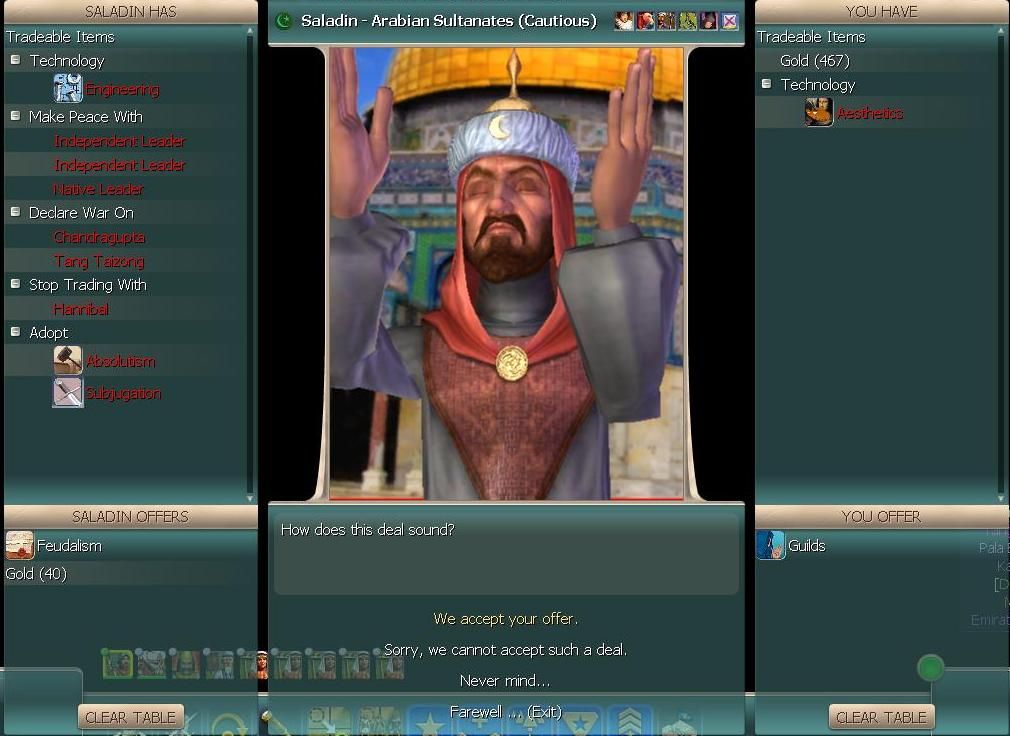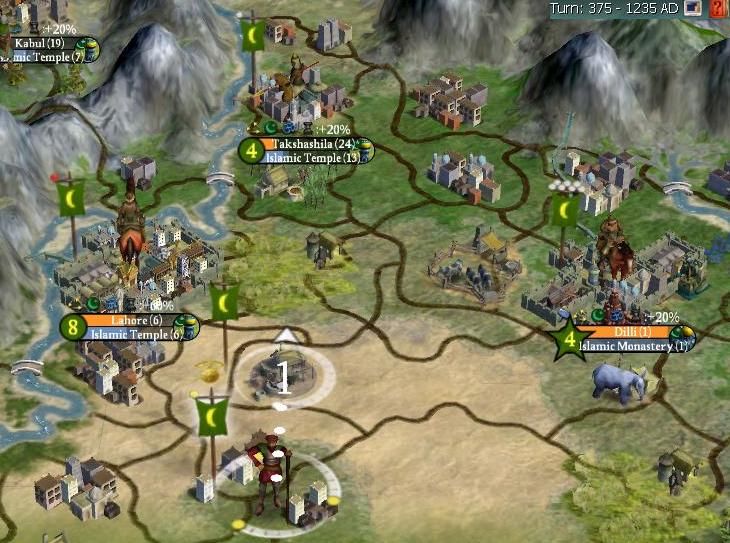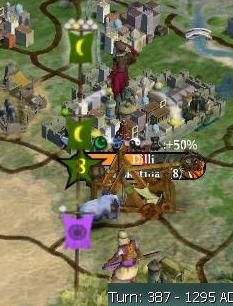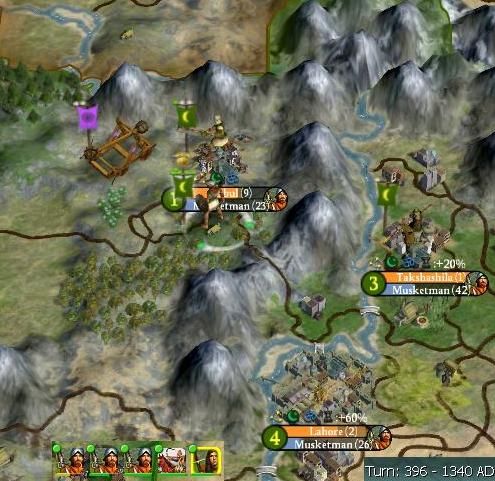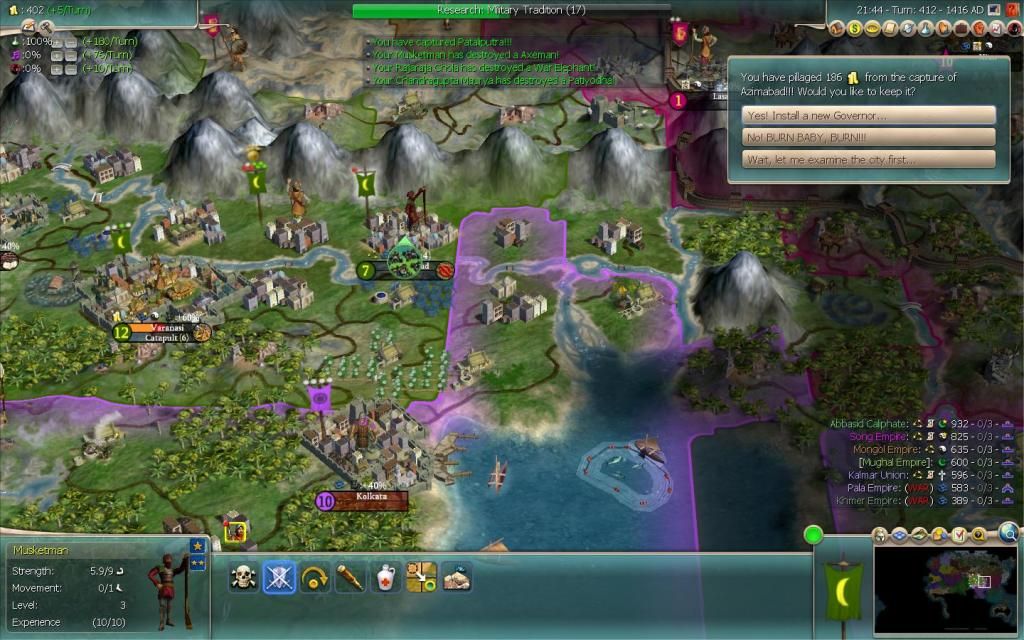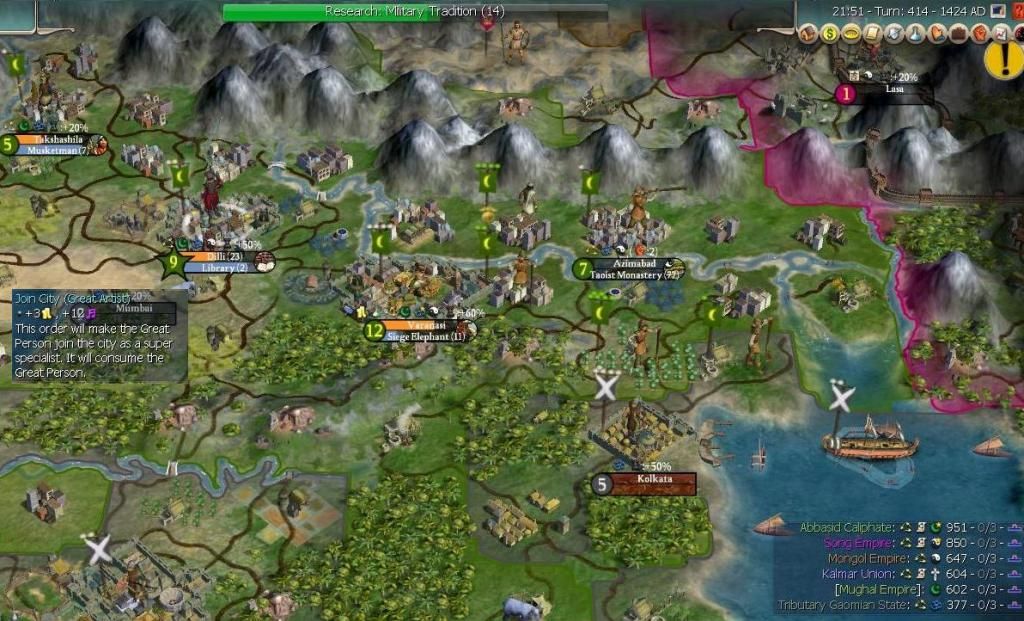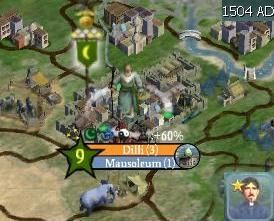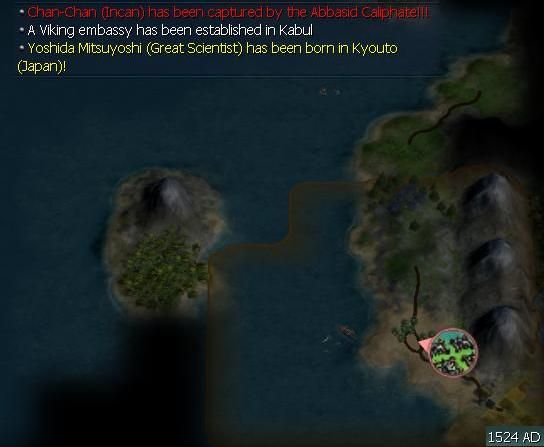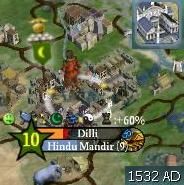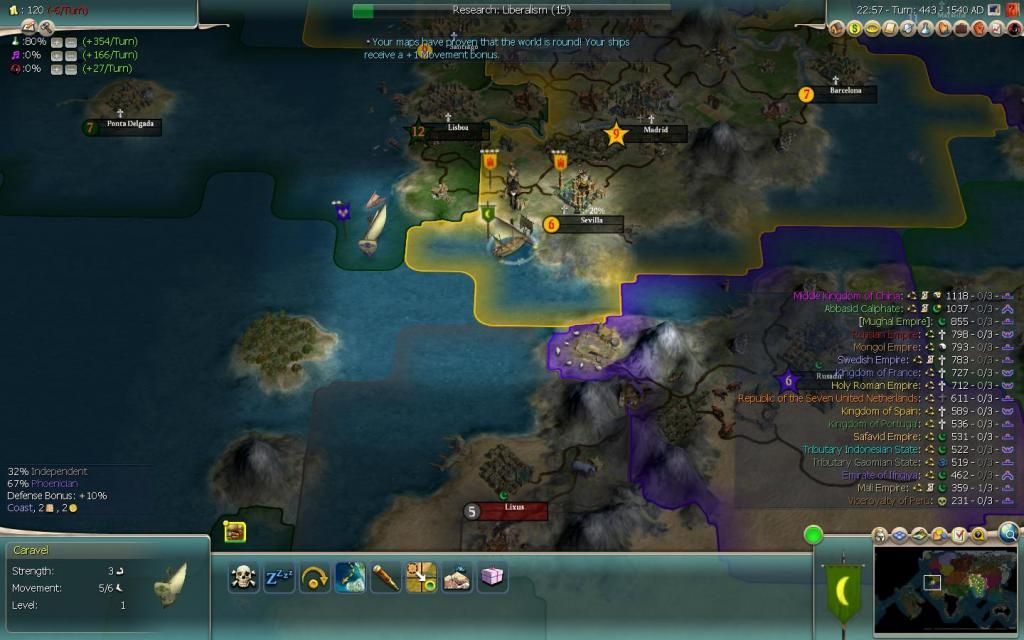Lone Wolf
Deity
- Joined
- Dec 4, 2006
- Messages
- 9,908
Another one of my stories, RFC-DoC 1.9 with some modifications. Mughals, Epic, Monarch, planning for a Culture Victory. Characters in the story are semi-invented, semi-historical.
Also, since I'm big on screenshots, should I place them in spoilers?
-----------
Qutub-ud-din, the new Sultan of Delhi, perhaps for the first time in his life, felt something approaching satisfaction. A Mesopotamian warlord in service of the Caliph in Mecca, he never liked taking orders from anyone. To be sure, his position was better then that of those who were directly integrated in the Calipate hierarchy, but he always aspired to a higher position.
For a while, he attempted to plot with the governor in Baghdad in order to overthrow the Caliph. But that plan came to nothing when the governor was assassinated. So Qutub gathered his followers and went East. His attempts to conquer the Zoroastrian Persian remnants of Parsa and Gwadar were unsuccessful. To be fair to him, he didn't spend much effortin attempting to gain control of them - they were weak, poor, and too close to the Caliphate for comfort. So he went further east, to Hindustan.
The Pala empire only seemed strong. The Maharajadhiraja of Pataliputra didn't have much control over the numerous vassals and governors. With relative ease, Qutub rushed across Sind and captured Delhi, with its famous Hindu temples of Khajuraho.
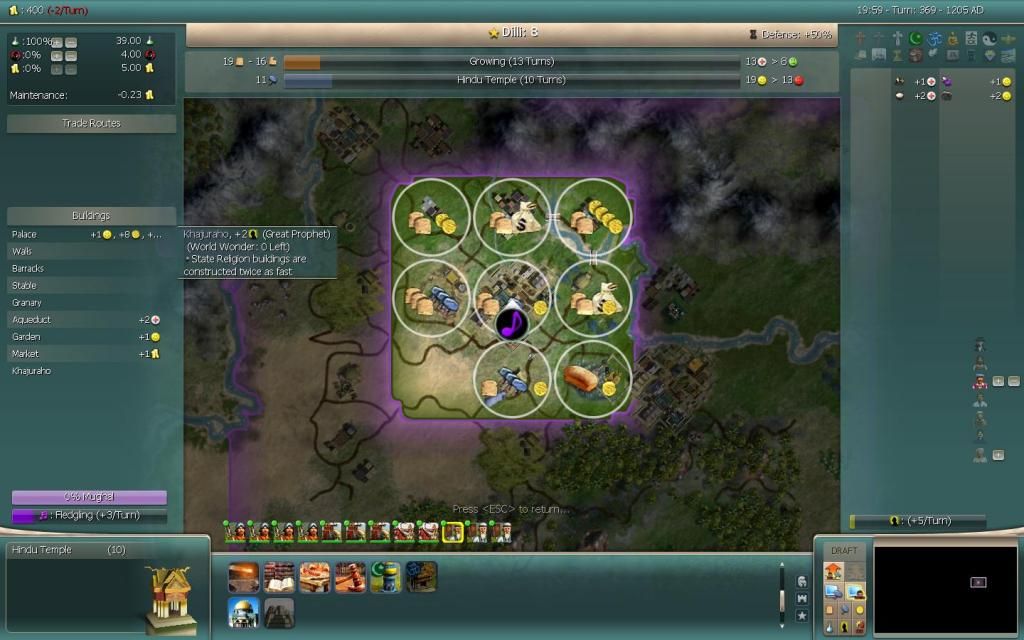
In ten years, the whole of Punjab, Kashmir, Sind and much of Gujarat and Bengal passed into Qutub's control. Pala attempts to regain Varanasi, one of the most glorious cities other then their capital, were unsuccessful. A chronicler loyal to Qutub somewhat exagerratingly wrote that large, grey bodies of dead Pala war elephants covered the land so much, you could hardly see the brown earth and green grass beneath.
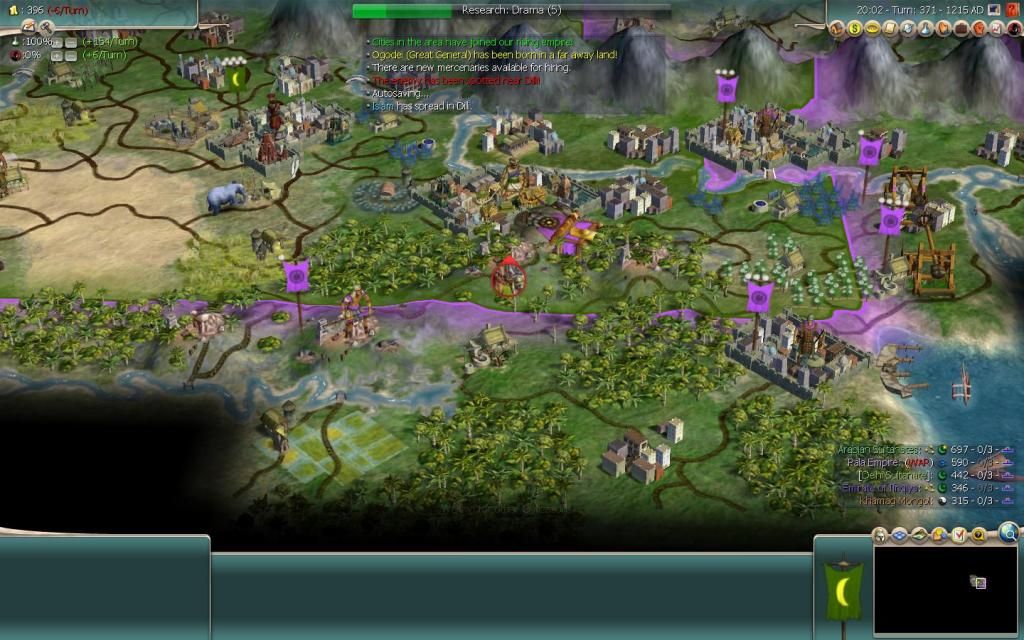
Varanasi was indeed a great city. As far as eye could see, Hindu and Buddhist temples dominated its skyline. The new conquerors, being pragmatically tolerant, continued to support the temples and tax the pilgrims.
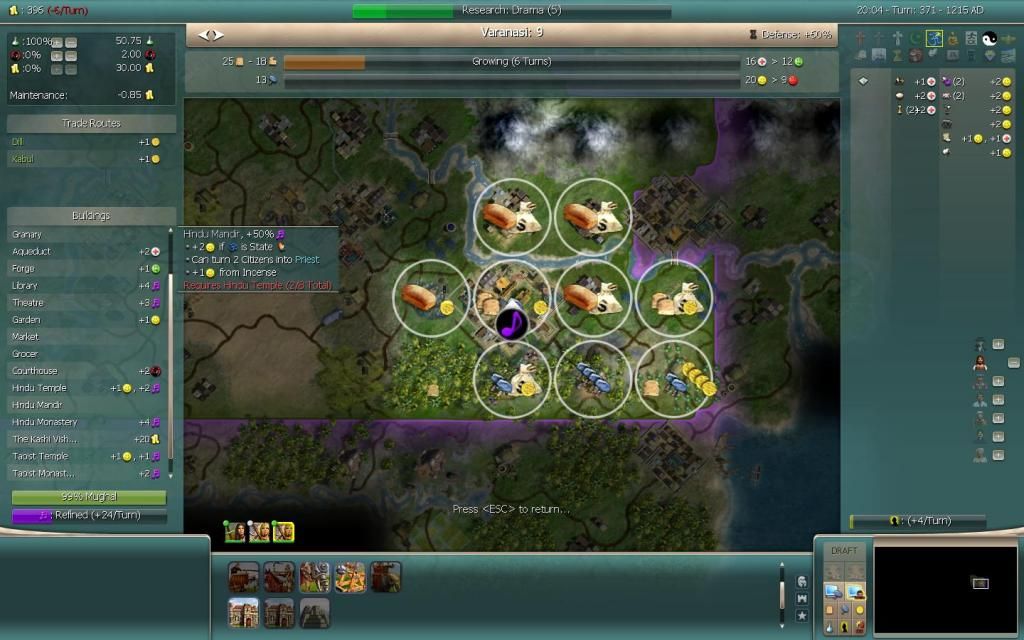
Kamboja tribes in Afghana continued to struggle against the new conquerors, formally remaining loyal to the Palas. They were a far greater problem to Qutub then the Palas themselves. Constant military presence was required in order to prevent them from capturing Kabul.
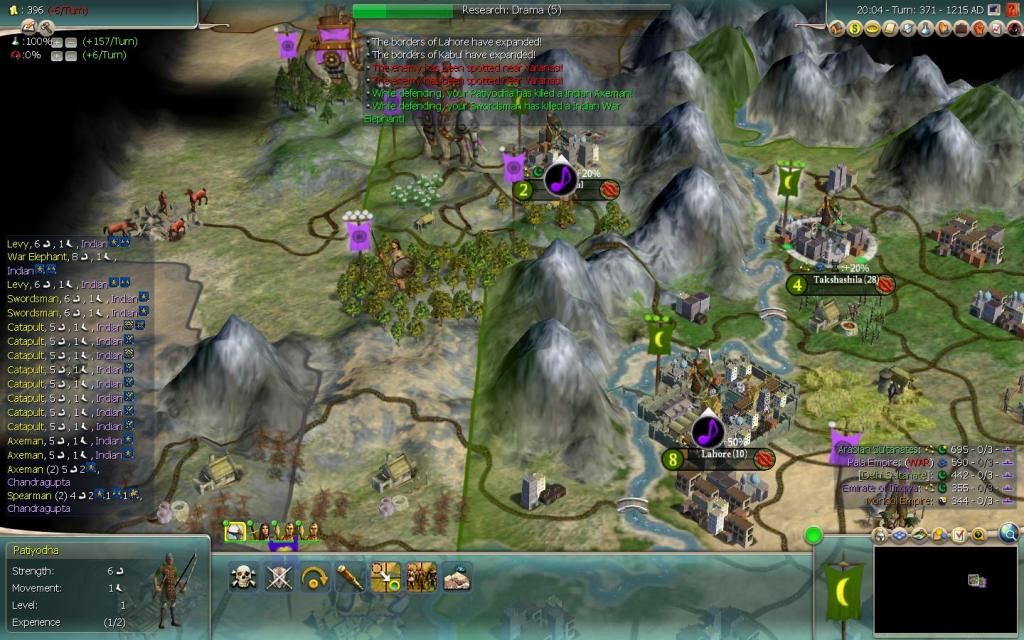
It was clear that the Delhi Sultanate was going to become the new major power in India. The Chinese embassy in Pataliputra sent a mission to Delhi, telling Qutub about the Middle Kingdom and its surrounding lands. Thus, the geographers in Delhi could legitimately sneer at the scientists in Baghdad, who had only vague knowledge of China.

Also, since I'm big on screenshots, should I place them in spoilers?
-----------
Qutub-ud-din, the new Sultan of Delhi, perhaps for the first time in his life, felt something approaching satisfaction. A Mesopotamian warlord in service of the Caliph in Mecca, he never liked taking orders from anyone. To be sure, his position was better then that of those who were directly integrated in the Calipate hierarchy, but he always aspired to a higher position.
For a while, he attempted to plot with the governor in Baghdad in order to overthrow the Caliph. But that plan came to nothing when the governor was assassinated. So Qutub gathered his followers and went East. His attempts to conquer the Zoroastrian Persian remnants of Parsa and Gwadar were unsuccessful. To be fair to him, he didn't spend much effortin attempting to gain control of them - they were weak, poor, and too close to the Caliphate for comfort. So he went further east, to Hindustan.
The Pala empire only seemed strong. The Maharajadhiraja of Pataliputra didn't have much control over the numerous vassals and governors. With relative ease, Qutub rushed across Sind and captured Delhi, with its famous Hindu temples of Khajuraho.

In ten years, the whole of Punjab, Kashmir, Sind and much of Gujarat and Bengal passed into Qutub's control. Pala attempts to regain Varanasi, one of the most glorious cities other then their capital, were unsuccessful. A chronicler loyal to Qutub somewhat exagerratingly wrote that large, grey bodies of dead Pala war elephants covered the land so much, you could hardly see the brown earth and green grass beneath.

Varanasi was indeed a great city. As far as eye could see, Hindu and Buddhist temples dominated its skyline. The new conquerors, being pragmatically tolerant, continued to support the temples and tax the pilgrims.

Kamboja tribes in Afghana continued to struggle against the new conquerors, formally remaining loyal to the Palas. They were a far greater problem to Qutub then the Palas themselves. Constant military presence was required in order to prevent them from capturing Kabul.

It was clear that the Delhi Sultanate was going to become the new major power in India. The Chinese embassy in Pataliputra sent a mission to Delhi, telling Qutub about the Middle Kingdom and its surrounding lands. Thus, the geographers in Delhi could legitimately sneer at the scientists in Baghdad, who had only vague knowledge of China.

Last edited:




